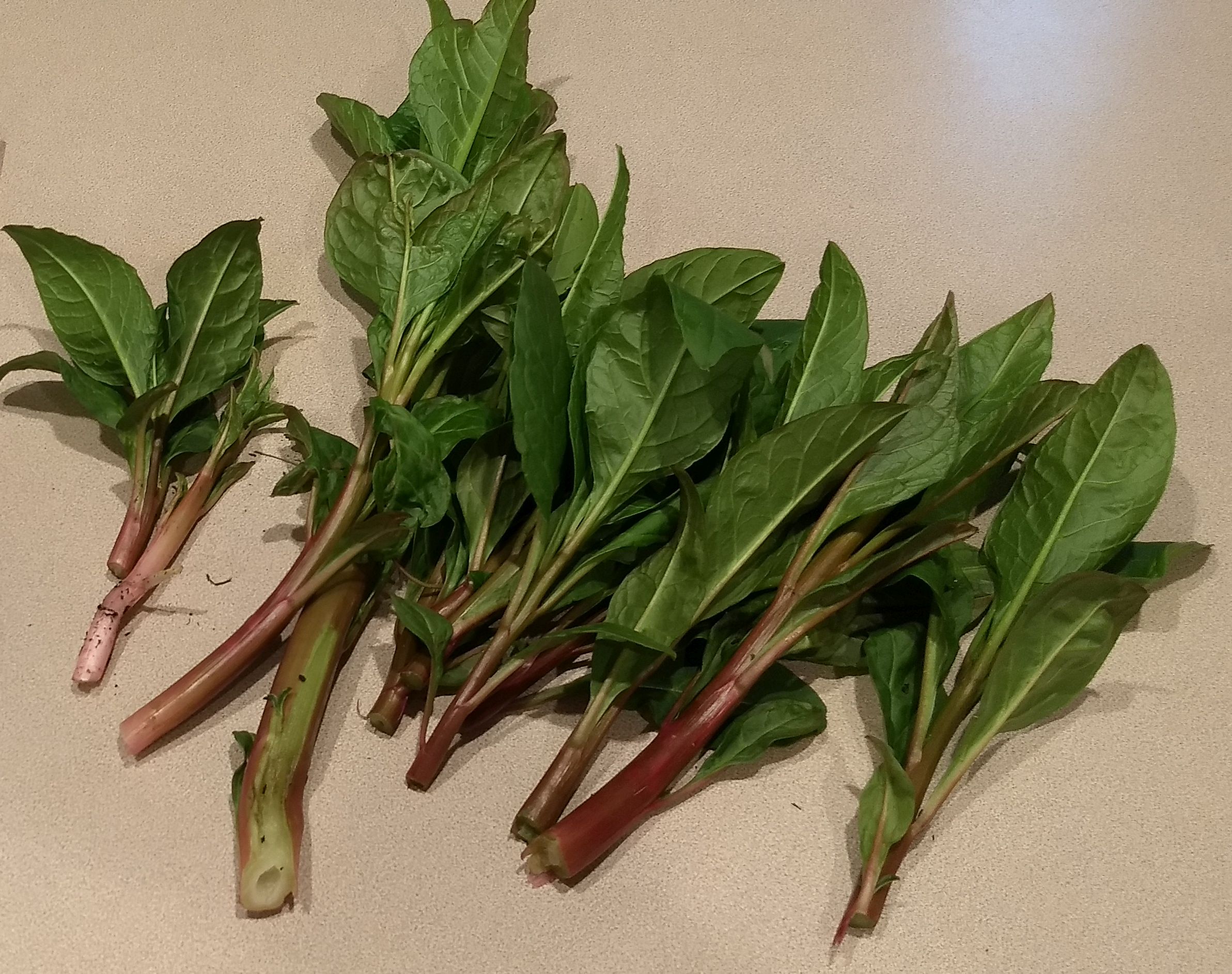Difference between revisions of "Pokeweed"
Jump to navigation
Jump to search
(Created page with "<html><img src="https://www.rasmusen.org/blog1/wp-content/uploads/2020/05/pokeweed-before-cooking.jpg" width="120" align=right size-full wp-image-142" /></html> April 14: pok...") |
|||
| Line 1: | Line 1: | ||
<html><img src="https://www.rasmusen.org/blog1/wp-content/uploads/2020/05/pokeweed-before-cooking.jpg" width="120" align=right size-full wp-image-142" /></html> | <html><img src="https://www.rasmusen.org/blog1/wp-content/uploads/2020/05/pokeweed-before-cooking.jpg" width="120" align=right size-full wp-image-142" /></html> | ||
| − | + | 2020. I had never tried pokeweed before. It is easily identifiable late in the summer, by its huge size (five feet+) and bright blue berries. At that time, though, it’s not good eating. In fact, the berries and roots are always deadly, and the various parts get worse over the summer. The books say to eat the young shoots in the springtime. The problem is, young shoots aren’t so easily identified. But I remembered where it was growning in our yard last fall, and it’s a perennial, so this year I was confident as to which shoots were poke. | |
| − | + | ||
| + | Before cooking. Note that the red color is a bad sign. Even some very young shoots were read, though, so I decided to chance it. The biggest of these shoots is perhaps too big. | ||
| + | |||
| + | |||
| + | <html><img src=" https://www.rasmusen.org/blog1/wp-content/uploads/2020/05/pokeweed-before-cooking-300x237.jpg " width="120" align=right size-full wp-image-142" /></html> | ||
Revision as of 08:26, 18 May 2022

2020. I had never tried pokeweed before. It is easily identifiable late in the summer, by its huge size (five feet+) and bright blue berries. At that time, though, it’s not good eating. In fact, the berries and roots are always deadly, and the various parts get worse over the summer. The books say to eat the young shoots in the springtime. The problem is, young shoots aren’t so easily identified. But I remembered where it was growning in our yard last fall, and it’s a perennial, so this year I was confident as to which shoots were poke.
Before cooking. Note that the red color is a bad sign. Even some very young shoots were read, though, so I decided to chance it. The biggest of these shoots is perhaps too big.
